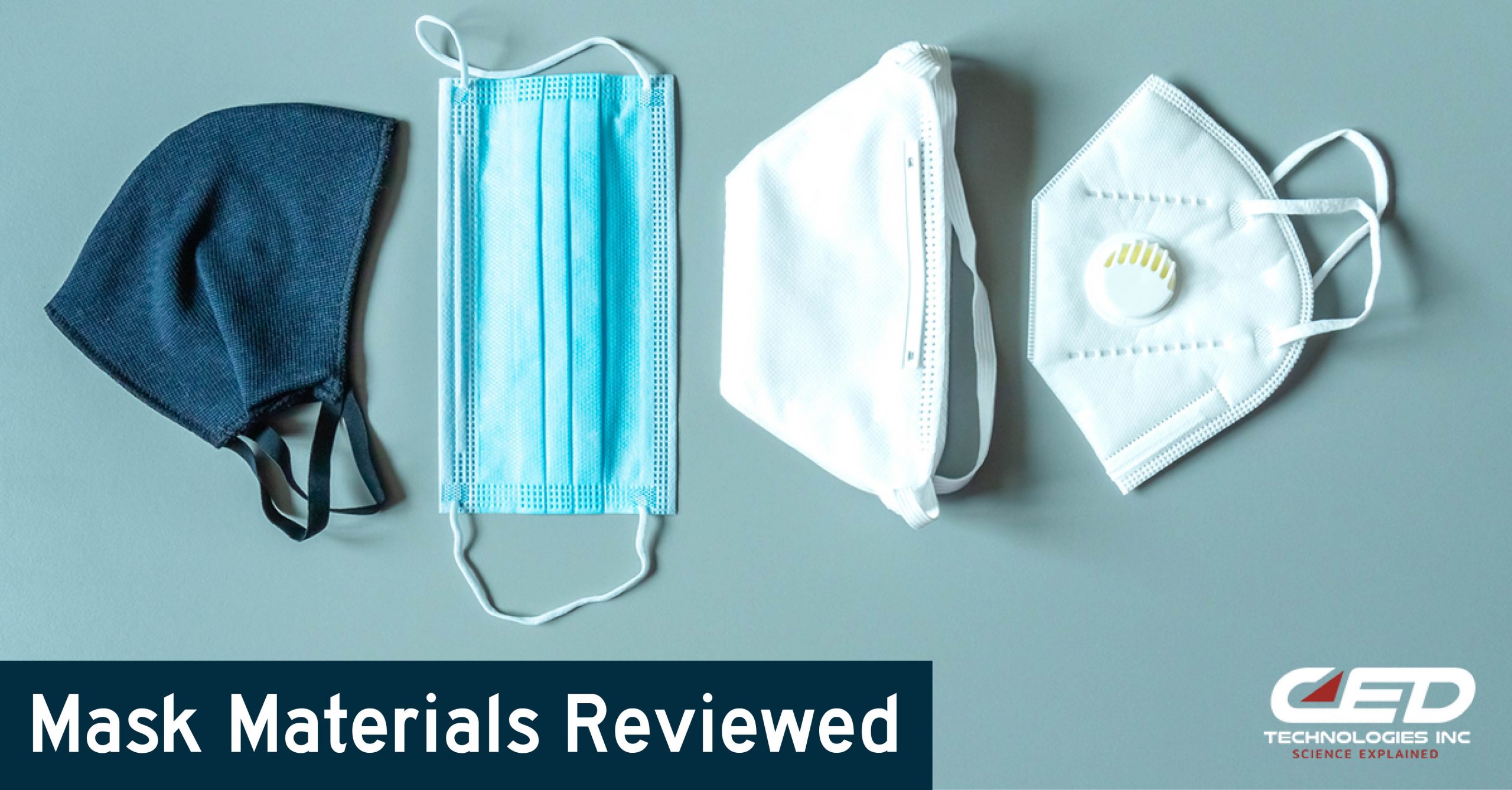Wearing masks, whether for our own protection or the protection of others, has become part of our daily routine. It matters the type of mask, material, and fit you choose. At CED we're experts in safety and are sharing some helpful information to guide you when making your next purchase.
Pick the Best Fabric
When it comes to the fabric of the mask, the tightness of the weave is crucial. At a minimum, the weave needs to be tight enough that you can’t see the outline of the individual fibers when you hold the material up to light. An NPR article comparing the aerosol filtration efficiencies of different fabrics found that a high-thread-count (600 TPI) cotton fabric far outperformed a moderate-thread-count (80 TPI).
Christopher Zangmeister, a researcher at the National Institute of Standards and Technology, agrees. Tightly woven 100% cotton is the best bet: it outperforms most synthetics. Cotton fibers have a structure that is three-dimensional on a microscopic level, which likely creates a roadblock to both outgoing and incoming particles, while synthetic fibers are smooth.
You can also increase the effectiveness of a multi-layer mask by combining one layer of cotton with a different material. Materials such as flannel, chiffon, or polyester, or a blend of those, are thought to provide good electrostatic filtering, a process that traps particles through the same kind of “cling” effect created by static electricity. A study determined that not only do hybrid masks outperform all other two-or three-layer masks made of a single material, they proved superior to N95 masks for particles smaller than 300 nanometers and only slightly inferior for larger particles.
A good option: a mask made of two layers of a tight-weave fabric with a built-in pocket where you can place a filter, says May Chu, an epidemiologist at the Colorado School of Public Health. However, even a mask made out of synthetic fibers with no cotton layer is better than no mask at all, according to Zangmeister.
Wash Masks Daily
If you’ve been wondering how frequently to wash your cloth masks, the experts recommend at least every day. As Dr. David Aranoff, Director of the Division of Infectious Diseases at Vanderbilt University Medical Center clarifies: “It's fine to wash it by hand with soap and water or with laundry detergent or put it in the washing machine. These masks can be air-dried, or they can be put into a dryer on high heat.” The most important thing is that the mask gets cleaned.
Get the Right Fit
If you’re wearing a cloth mask, those that cup tightly to your face are best. Masks with pleats or folds, many of which are easily homemade, are also a good choice. The folds expand so that you have more air flowing through the fabric itself instead of leaking out through gaps at the sides of the mask. Masks with a flat front design are less effective, Aranoff says. For the best protection, be sure your mouth and nose are covered at all times with a mask that forms a seal on your face.
Not all masks are made with adjustable ear loops, which can reduce effectiveness and fail to form that seal. If you’re wearing a blue rectangular surgical mask, you may find that one size does not fit all. Canadian dentist Olivia Cui has shared an easy solution for customizing the fit in this popular video.
As safety experts specializing in finding the cause for accidents or product failure, CED hopes this article helps you find a mask that fits well. As we’ve shared before, indoor air quality can only be filtered so much for particles and respiratory droplets. Watch the recording of our webinar on the design and operation of heating ventilation and air conditioning (HVAC) systems as it relates to the concern of air transport of respiratory droplets (COVID-19).
Click Here To See Our Full List of Experts Click Here To Submit an Inquiry about a possible Claim or Case.






